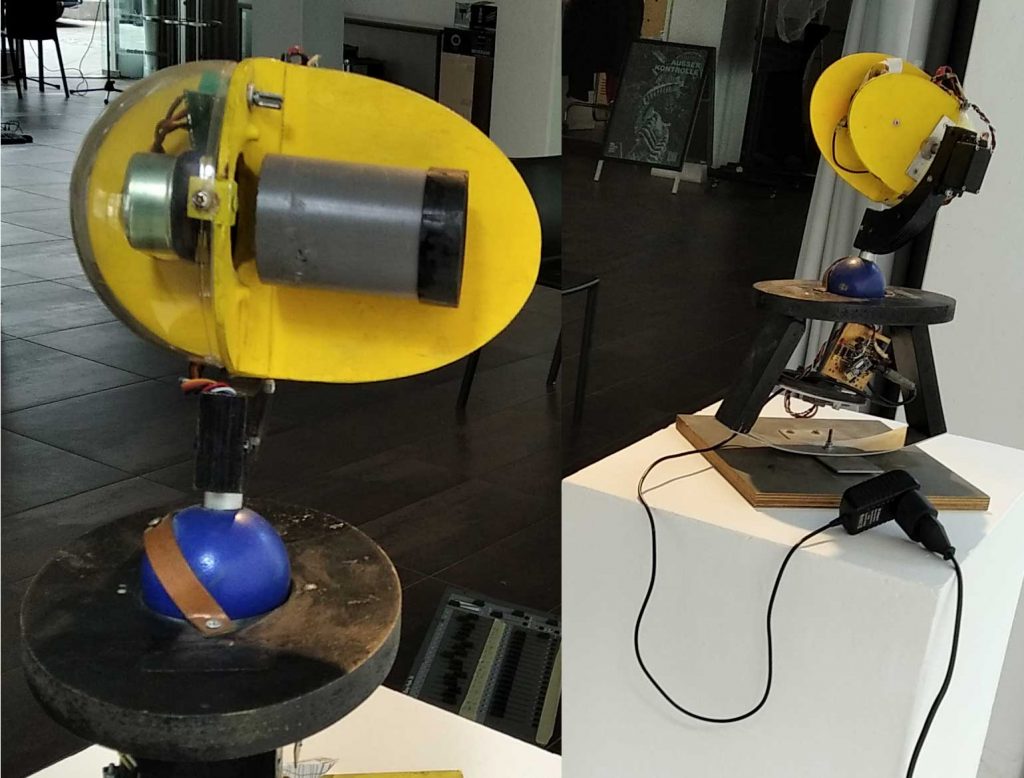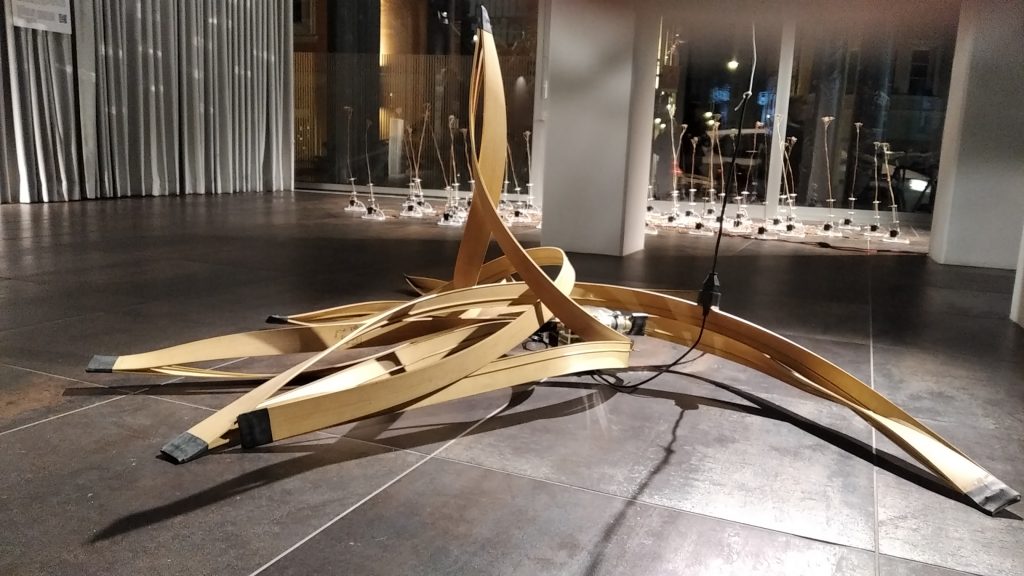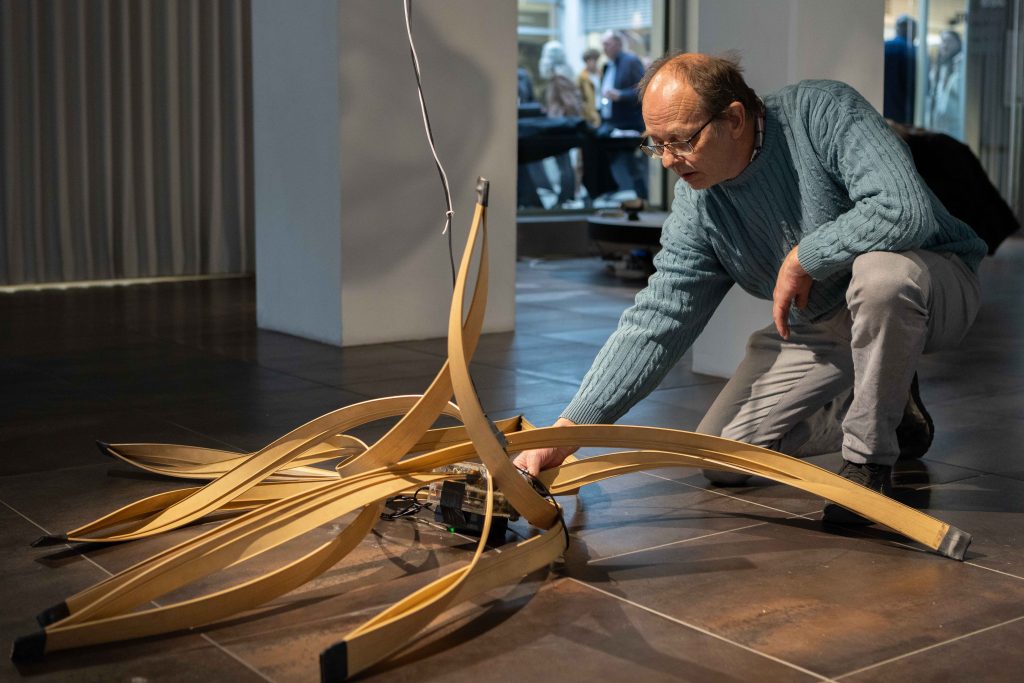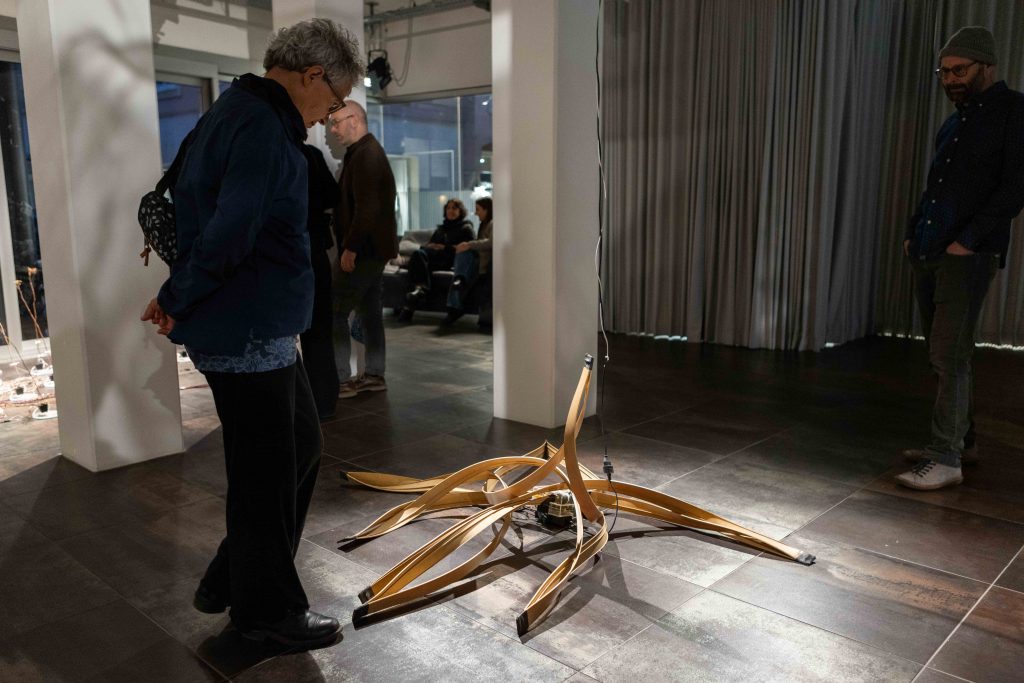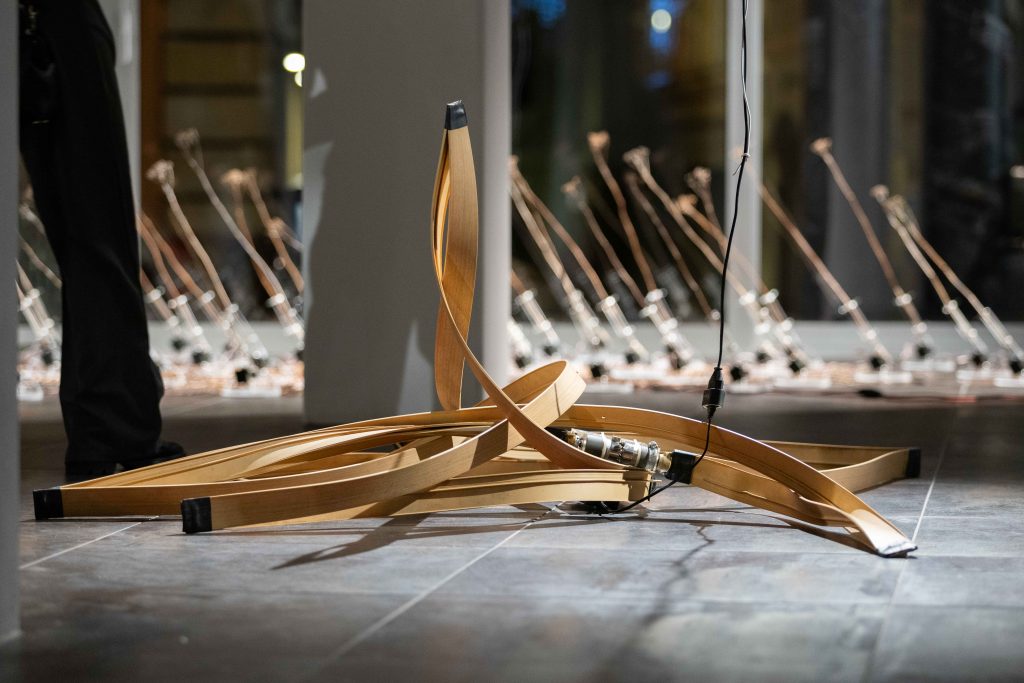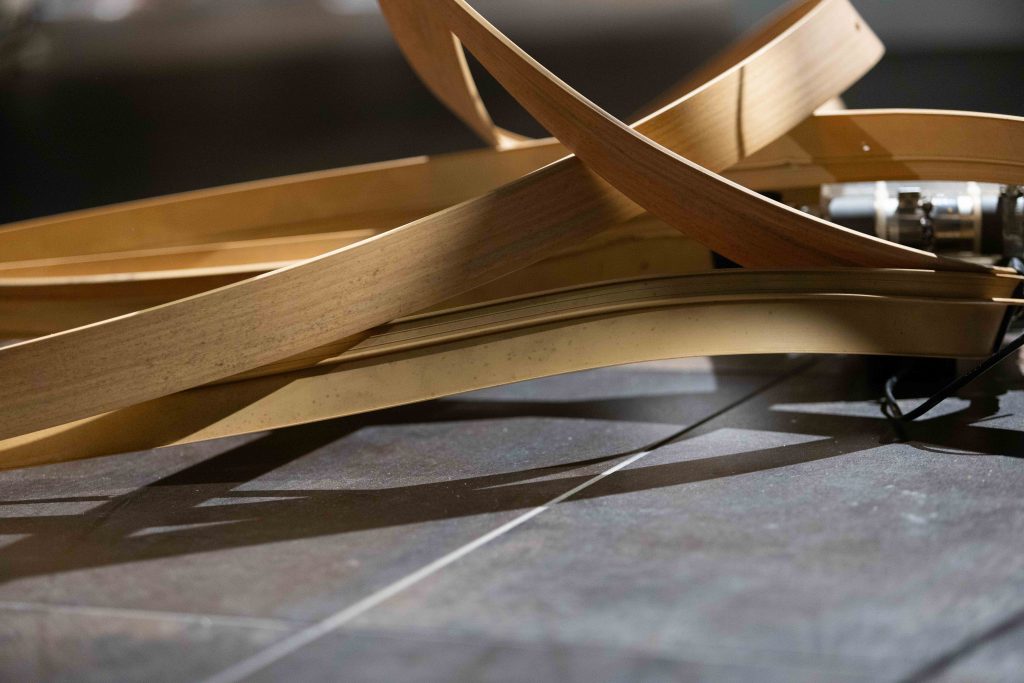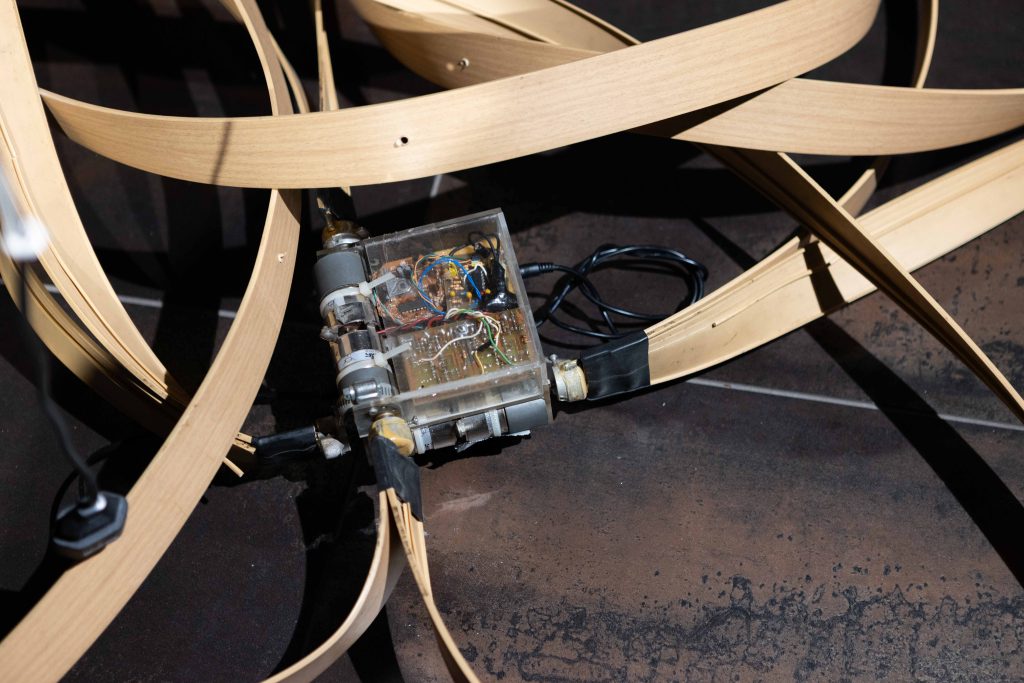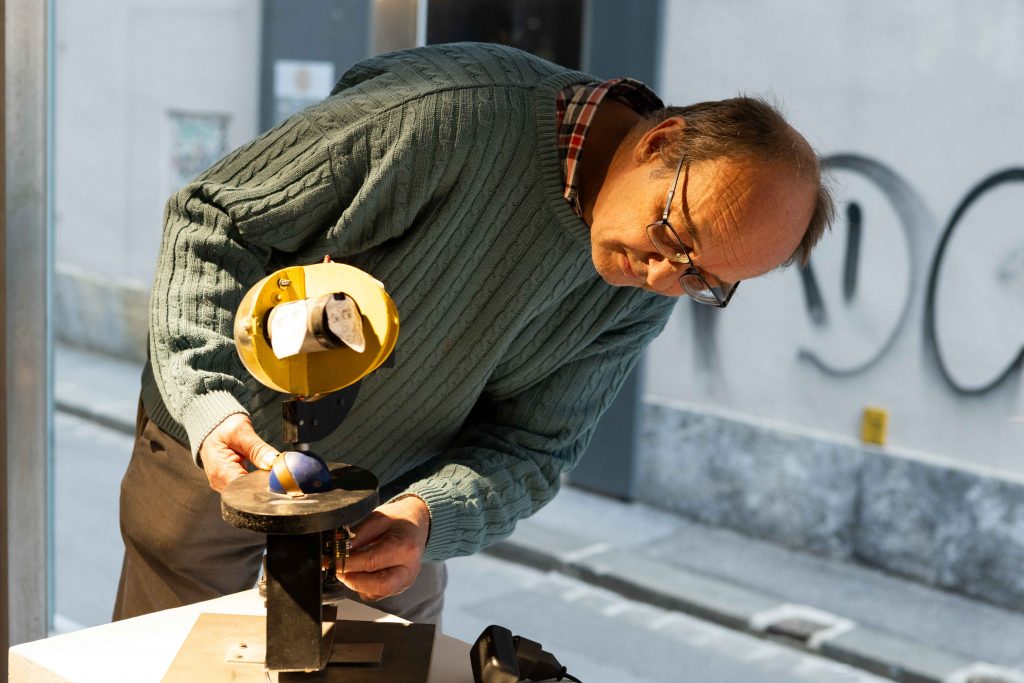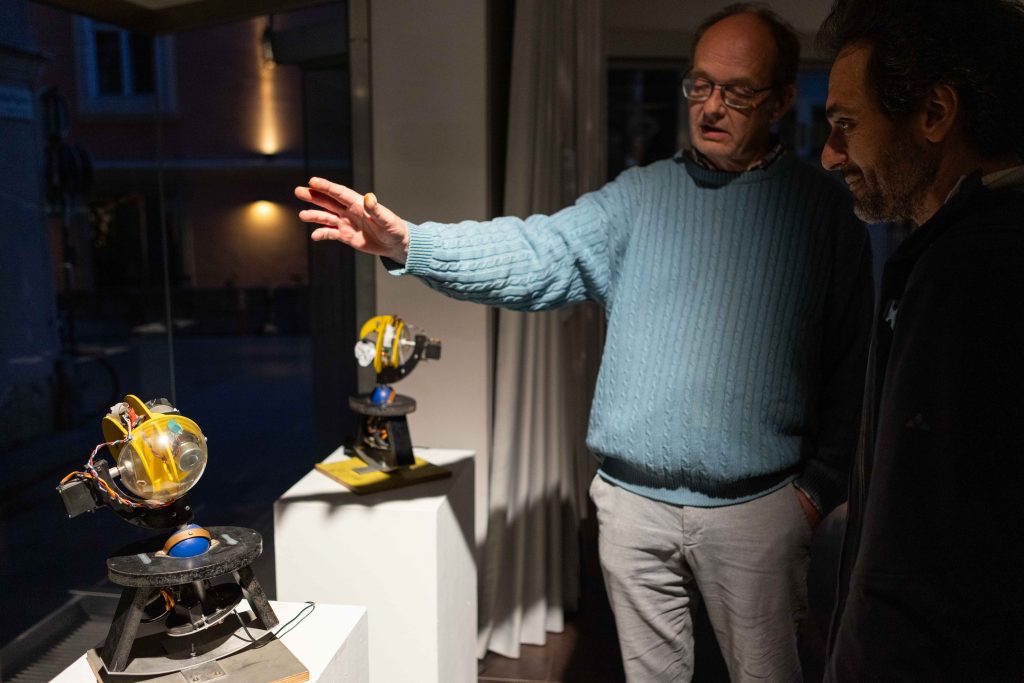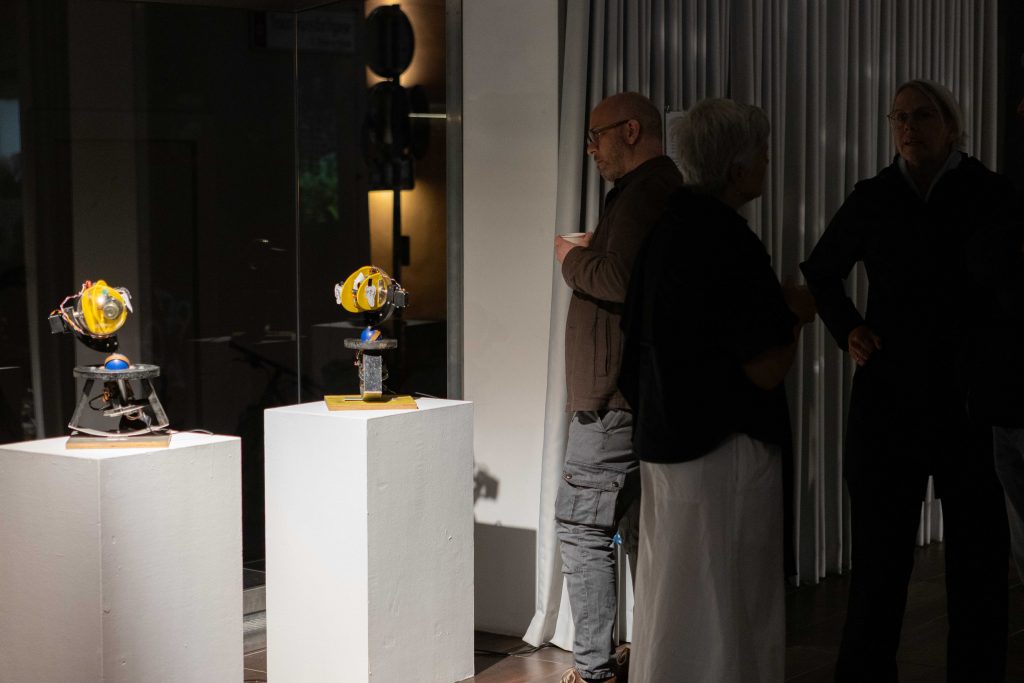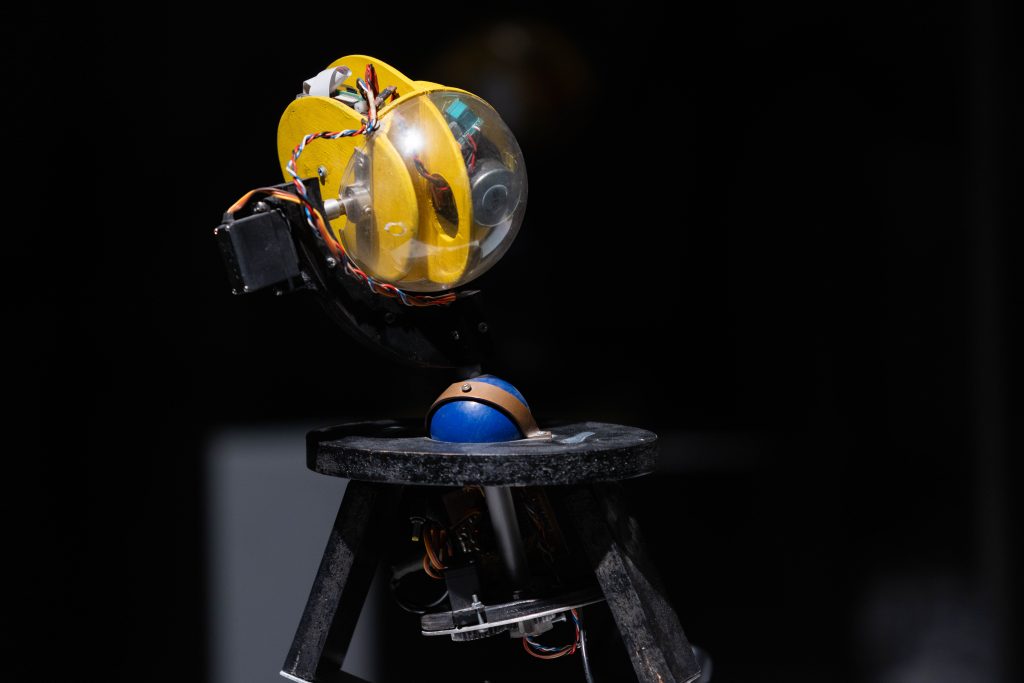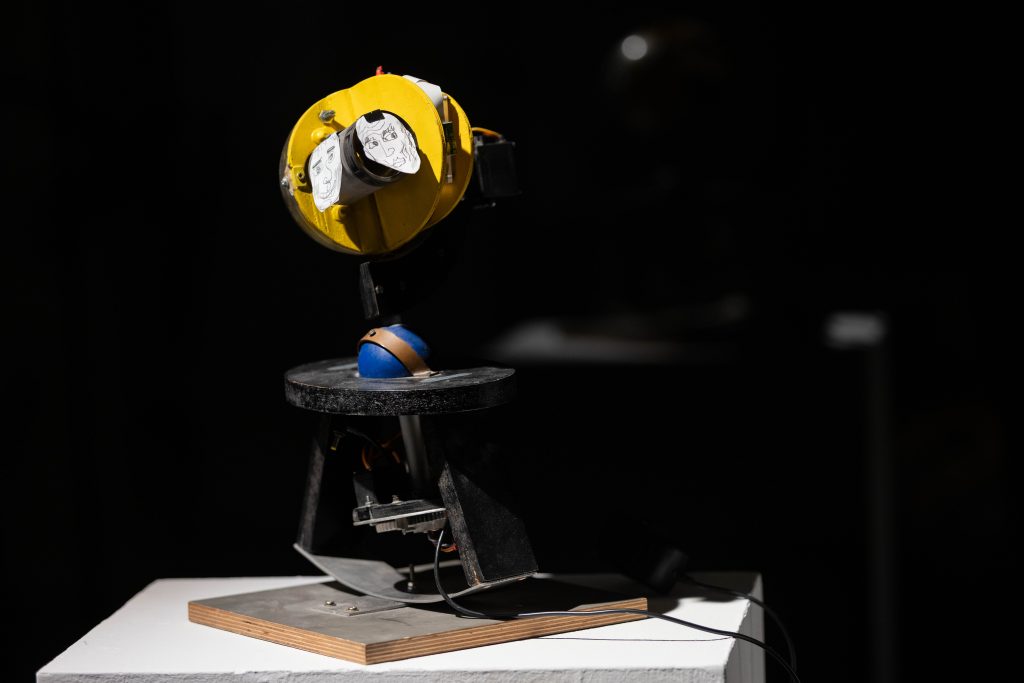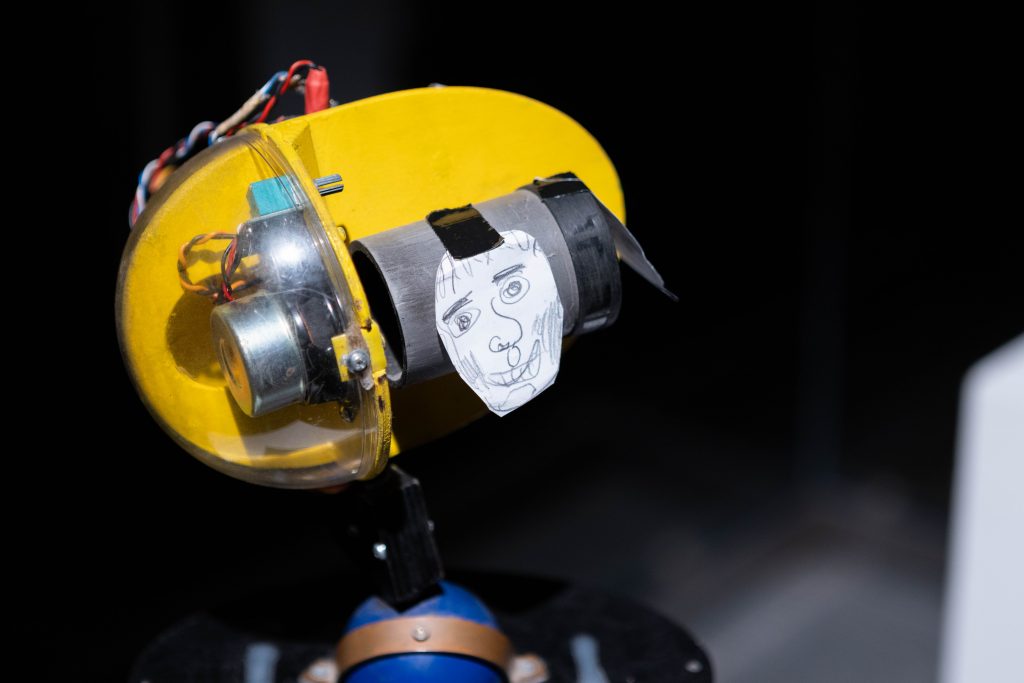Two objects of mine OUT OF CONTROL at ESC MEDIEN KUNST LABOR in Graz from 16th May to August 2025 -> https://esc.mur.at/de/node/3908
Short video Introduction to objects -> https://www.turborebop.net/wp-content/uploads/2025/05/BSAVSKI-Strained+Speaks.mp4
Strained Structures: Octopussy / homepage here: https://turborebop.net/html.php?htm=prenapete_strukture/index
Thesis: Complexity is the superposition of multiple simplicities. A similar thought: going from basic rotary movement to complex bodily movement – the spatial movement. A morphological object. The principle of tension equilibrium is tightly connected to the word synergy – when two or more forces working against each other within the system achieve equilibrium between their inner tensions and compressions (Buckminster Fuller). Can be easily translated to the human systems of thought and cognition, that also seem to be “strained” system of inner oppositions. A metaphor incarnate.
The principle is also called Tensed Structures. First presented on 21st October 2008, Kapelica Gallery Ljubljana. Here I decided for eight inter-twined elements that are in a closed loop (in the manner of pentagram), powered by four motors. The basic thought is: complexity is the superposition of multiple simplicities. Another similar thought: a metaphor incarnate: going from basic motor movements to complex bodily movements – via a specially designed translation of rotary movement (in the xy plane) to spatial movement. The basis is the principle of mechanical strain applied to specifically interconnected basic elements, that form the resultant structure to which all the tensions are transferred. A kind of morphological object.
The transfer of mechanical energy is via torsion of flexible elements that are connected two-by-two at the ends and thus into a wholesome three dimensional structure which is in this way under strain. The result is an interesting cybernetic system with inherent energy (potential energy) – and a number of properties that make it ‘more morphologic, more organic, more alive’. From the Physics we know that the potential energy likes to convert to kinetic (movable) energy – and this is the main motivation for this built. The omnipresent rotational (linear) movement of the motors becomes a more primary movement: the translation movement.
Though the idea at first came together independently – it was a reinvention. I met with the word ‘tensegrity’ (a combination: tensional integrity; wholesomeness, unity by way of tension). The word ‘tensegrity’ was coined by the cult figure Buckminster Fuller in 1950s, the author of the concept was sculptor Kenneth Snelson, who used it for his sculptures – e.g. 19-meter Needle Tower (1968). It seems that also the Russian architect Boris Stučebrjukov did something similar in his artistic time (1970s and 80s). For Fuller the principle of tension equilibrium was tightly connected to the word synergy – when two or more forces working counter each other within the system achieve equilibrium between their inner tensions and compressions. It is not about the counteraction – but about the complementary actions that are always present: the principles of pushing and pulling, contracting, retracting, attracting and repulsing – he added.
For a wholesome system it is necessary to have conceptually appropriate basic elements (“primitives”), that already exhibit the ability from complementary actions: tension and compression – or any other kind of complementary relation. In cybernetics it is said for such systems that they exhibit an in-built intelligence. Here I would rather use the word in-built nonlinear “inertias”. In any case it is a kind of specific identity (even if just a mechanic one).
From here on the things get quite metaphoric and the principle can be transferred to other areas. Also to the human systems of thought and cognition, that also seem to be a kind of “tensed or strained”. The word was borrowed also by writer Carlos Castaneda for his cult magical stories. For Castaneda this principle denotes the everyday art of adapting to one’s own energy and to the energy of the others in a manner that adds to the wholeness of community that we form.
/photos: Martin Gross @ esc medien kunst labor, May 2025/
Twin Speaks / homepage here: https://www.turborebop.net/?p=881
Twin Speaks is an artificial duo in dialog. The title Twin Speaks is referring to the cult tv-serial Twin Peaks by director David Lynch where pervasive feeling of magic plays a dominant role. They can look at each other and prove they are separate entities. If in-synchro they melt into one – the two eyes – or a choir/ or a march. When one follows the visitor and the other looks at the first – this is the view of the third (“the other”) – on the situation. There is quite some variations possible and therefore a good study of identities and roles that these entities can take on themselves. Of course it is a metaphor of human relations that as an artist I was always interested in.
Twin Speaks is an artificial duo in dialog. Development started in 2018. The title Twin Speaks is referring to the cult tv-serial Twin Peaks by director David Lynch where pervasive feeling of magic plays a dominant role. Dialog is always a combination of movements and voices. Both coming from the body and – for the living beings – melted into one. Dialog is an abstraction on the level of interpersonal relation, where some fusion happens between the two parties caught in a dialog. Movement is complemented by a counter-movement and voice by a counter-voice. Of course, the voices can also melt into one song. Or turn into incoherent babble.
Twin Speaks is firstly an interactive-generative structure, taking on the metaphors of identities and roles that emerge within the process of communication. Computer vision further allows for the objects to sense the human face and follow it (“personification of the subject from the part of machine”) – and opens the space of potential communication between the objects and the visitors.
The two entities are connected via wireless, so they they both have some idea about the dialog.
When an entity turns to a visitor: this is a look. They can look at each other and prove they are separate entities. If in-synchro they melt into one – the two eyes. When one follows the visitor and the other looks at the first – this is the view of the third (“the other”) – on the situation. There is quite some variations possible and therefore a good study of identities and roles that these entities can take on themselves – visitors included. Of course it is a metaphor of human relations that as an artist I was always interested in.
The autonomy of artificial creatures used to be quite magical when noticed by the visitor. It causes the personification of the entity from the part of human observer. Entity-object is recognized as entity with identity. Next step would be giving it a name (“a house pet”). The existing study is not finished: it uses some random algorithmics – jumps between basic movement positions to form variety of movements – stochastic methods and more coherent moments of (a)syncronized patterns. Artificial intelligence (AI) would probably enhance the concept of this kind of autonomy – with more meaningful interactive-generative results. But at some point it would become an everyday thing – the fascination, magic would be gone. This moment may already be now.
/photos: Martin Gross @ esc medien kunst labor, May 2025/
